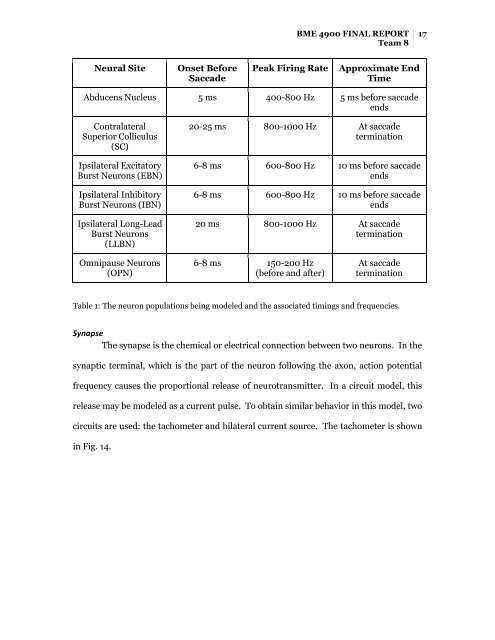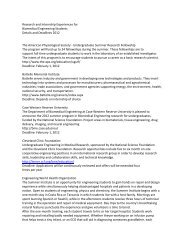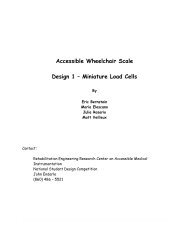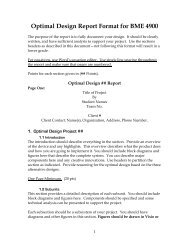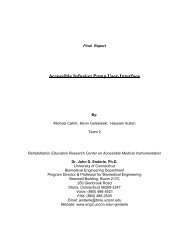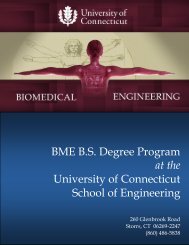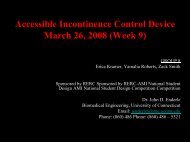BME 4900 Final Report - Biomedical Engineering - University of ...
BME 4900 Final Report - Biomedical Engineering - University of ...
BME 4900 Final Report - Biomedical Engineering - University of ...
You also want an ePaper? Increase the reach of your titles
YUMPU automatically turns print PDFs into web optimized ePapers that Google loves.
<strong>BME</strong> <strong>4900</strong> FINAL REPORT 17Team 8Neural SiteOnset BeforeSaccadePeak Firing RateApproximate EndTimeAbducens Nucleus 5 ms 400-800 Hz 5 ms before saccadeendsContralateralSuperior Colliculus(SC)Ipsilateral ExcitatoryBurst Neurons (EBN)Ipsilateral InhibitoryBurst Neurons (IBN)Ipsilateral Long-LeadBurst Neurons(LLBN)20-25 ms 800-1000 Hz At saccadetermination6-8 ms 600-800 Hz 10 ms before saccadeends6-8 ms 600-800 Hz 10 ms before saccadeends20 ms 800-1000 Hz At saccadeterminationOmnipause Neurons(OPN)6-8 ms 150-200 Hz(before and after)At saccadeterminationTable 1: The neuron populations being modeled and the associated timings and frequencies.SynapseThe synapse is the chemical or electrical connection between two neurons. In thesynaptic terminal, which is the part <strong>of</strong> the neuron following the axon, action potentialfrequency causes the proportional release <strong>of</strong> neurotransmitter. In a circuit model, thisrelease may be modeled as a current pulse. To obtain similar behavior in this model, twocircuits are used: the tachometer and bilateral current source. The tachometer is shownin Fig. 14.


